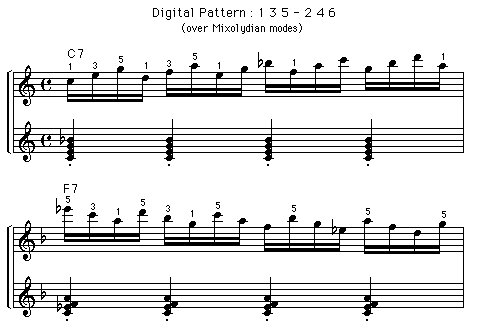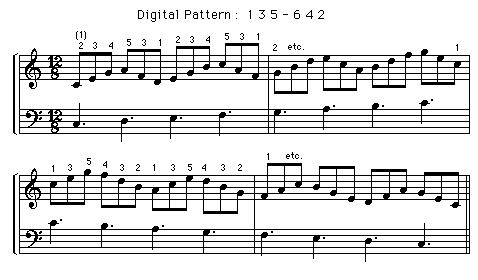(Down - Up - Top)
KT 9.3 - Triad Patterns
Triads are three note chords. The three notes are spaced at intervals of a 3rd.
When the chord is in root position the notes occur either on successive lines or in successive spaces on the staff.
When the three notes are sounded simultaneously they form a solid chord, when they are played one after the other they form a broken chord or arpeggio. |
Digital Pattern No.5 consists of scale-tone triads (all chord tones are derived from the same scale) of the Mixolydian mode.
(The Mixolydian mode is most commonly used for improvisation over dominant 7th chords.)
Audio : Mixolydian mode

The triads are played as arpeggios and in ascending or descending order through the mode.
This forms the pattern : 1 3 5 - 2 4 6 - 3 5 b7 - etc.
Digital Pattern No.5 uses these 3-note segments in a 4-note rhythm pattern of semiquavers.
This creates an interesting rhythmic effect, useful in Jazz improvisation over dominant chords. (You can apply the same idea of course to any other scale.)
Use only the fingers 1, 3 and 5 for this pattern and rotate the wrist from left to right and back.
Audio 9.7

Digital Pattern No.6 is a triad pattern over the major scale. For every group of two triads the second triad is played in reverse order.
This creates the pattern : 1 3 5 - 6 4 2 - 3 5 7 - 8 6 4 - etc.
This time the exercise is in quaver triplets rhythm, where 3 notes are played in the time of one beat.
Use all five fingers for this pattern like this : 2 3 4 5 3 1 - 2 3 4 5 3 1
Audio 9.8
